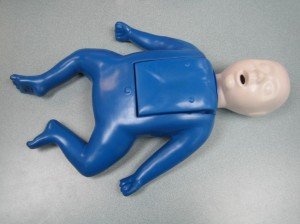It is a known fact that teething usually starts once an infant is between 4-8 months old, but the timing tends to vary. In rare cases, teeth are already present at birth. In some babies, the indications of teething can start long before a tooth erupts while others might not experience any symptoms.
Parents can struggle to understand how to provide comfort to a child during the teething period since the side effects can be difficult to discern. Luckily, infants are resilient and they can quickly forget the side effects of teething. On the other hand, it might not be easy for some parents to forget though. If you want to learn more about teething, click here.
Drooling
An infant might have several symptoms of teething several days, weeks or even months before a tooth erupts through the gum. The infant will start to drool more than usual with no other indications present.

Drooling early can be common and might be due to the lack of control of the tongue. Take note that infants can swallow but it might take some time to learn how to handle the saliva in their mouths. The drooling can also cause coughing due to the excess saliva that runs down the throat. The child can develop a red-colored rash on the face caused by the skin being wet for extended periods of time from the excessive drooling.
Physical side effects
In most cases, there might be bulging or cyst on the gum where the tooth is about to erupt. Typically, the first teeth to erupt are the bottom ones and then followed by the top center teeth. The teeth will fill in and moves from the front to the back and alternative between the top and bottom.
The pattern of the erupting teeth varies for every child. In some children, several teeth erupt at a time. Often, there is an outline in the gums of the tooth that is about to erupt. You can check that a tooth is responsible for the side effects by simply using your finger and feel around the gums. If there is a hard spot, it might be a tooth. Just remember that the infant might want to bite down when the finger is inside the mouth.
Changes in the behavior
The infant can become unusually irritable, fussy and experience mysterious waking at night when teething period starts. Some parents might be uncertain of the cause for these changes in the behavior. Take note that these mild changes in the behavior can indicate that teeth are about to erupt on the gum surface. At this point, there are no physical indications of teething. The infant can suffer a decrease in the appetite due to the pain in the mouth. Additionally, it is also common for infants to suck or bite more than usual.
Other symptoms
Fever and runny nose are often experienced when a child is teething. Nevertheless, there is no evidence that supports that these are indications of teething. It is recommended to consult a doctor if cold symptoms develop. These indications do occur during teething and can indicate gum inflammation. The child will also rub his/her ears or cheek, pull on his/her hair or rub his/her face on objects to sooth the gum pain.
